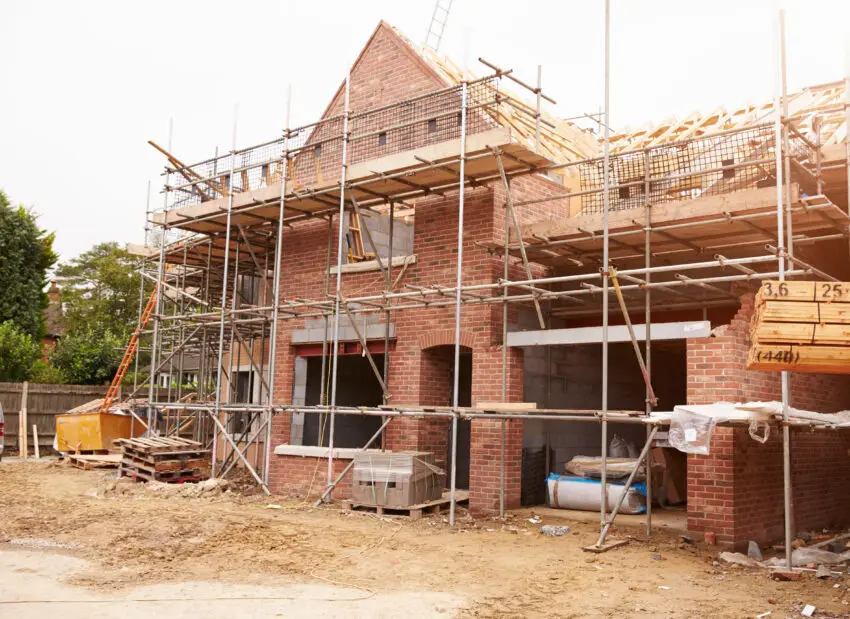Labour’s mandate for 50% affordable housing on grey belt land faces substantial criticism from small developers, highlighting significant financial risks associated with this target.
Viability’s analysis of small-scale grey belt sites within the London green belt reveals pressing concerns. Given the high property values in these areas, developers can usually expect solid returns. The study set a baseline profit margin of 20% for developers to maintain operation and secure financing, while landowners were assumed to require at least 10% above current land value to sell.
The findings were stark: if the 50% affordable housing requirement is enforced, 80% of these sites would pose significant financial risks, making development impractical. However, a reduction to a 35% affordable housing ratio would render 30% of the sites viable. As part of broader planning reforms, Labour aims to construct 1.5 million homes over the coming four years, including on grey belt land, which consists of previously developed green belt sites needing cleanup and repurposing.
Local councils have been assigned binding housing targets, with Deputy Prime Minister Angela Rayner emphasising the professional and moral obligations of council leaders to pursue development. The Ministry of Housing, Communities and Local Government’s ongoing consultation, closing on September 24, notes that the 50% target is subject to site viability. Developers unable to meet this standard must submit a viability assessment, subject to local authority approval, which may be denied if excessive land costs are identified. Input is also being sought on whether lower targets should be allowable in low-value areas to encourage northern development.
Henry Mayell, co-founder of Viability, supports increased housebuilding but calls for more flexibility to lower costs for small developers. “It’s essential to ensure that development remains financially viable. The stopping point for any developer building homes is whether the site is financially feasible,” Mayell articulated. Small developers, contributing around a quarter of the 200,000 new homes annually, face numerous costs including land cleanup, biodiversity improvements, and local infrastructure. Affordable housing generally incurs costs of 85% to 90% of private market homes but is sold at 50% to 70% of market rates, stressing developers’ profits.
Mayell underscores that the sale of affordable homes results in losses, necessitating profits from market homes to sustain business. “Developers need to earn their profit margins to stay in business, and new regulations are making this increasingly difficult,” he remarked. The Ministry for Housing, Communities and Local Government refuted Viability’s conclusions, stating, “We do not recognise these figures. Developers have some flexibility in exceptional circumstances, but they must provide strong evidence if they cannot meet our expectations on affordable housing.”
David O’Leary, Executive Director of the Home Builders Federation, acknowledged efforts to enhance planning but pointed out the rising costs from local and national policies, including future homes standards, biodiversity requirements, and increased social housing demands. O’Leary noted, “While public bodies have the right to determine the social benefits derived from development, this must be done sensibly. Setting targets too high risks halting development altogether, undermining overall housing supply.”
Viability, whose software automates land assessment for small developers—an innovation typically utilised by industry giants—aims to empower small-scale developers with data-driven insights to collaborate more effectively with local authorities. Supported by funding from Innovate UK, the company officially launches on September 16, following two years of development. “Our mission is to tackle the housing crisis by supporting SME developers,” Mayell stated. By significantly reducing the time required to evaluate potential sites, Viability’s technology enables faster and more accurate decision-making, promising to aid in addressing the UK’s housing needs.
Labour’s affordable housing target on grey belt land is generating significant debate. Small developers argue that the 50% requirement presents substantial financial risks, and suggest a more flexible approach, possibly lowering the target to 35%, to ensure the viability of more development projects. As consultations continue, the balance between ambitious housing goals and economic practicality remains a critical consideration.

